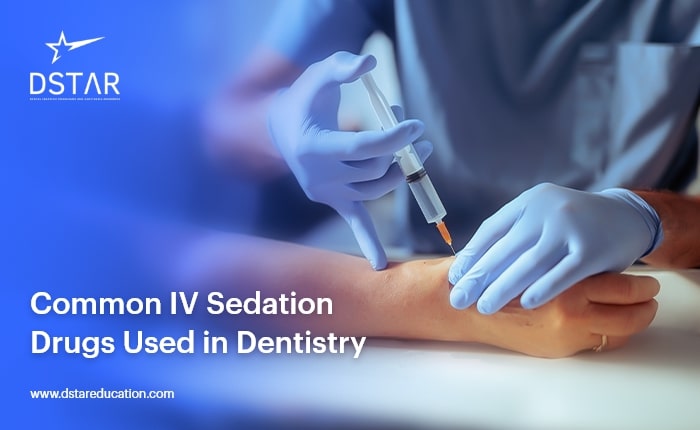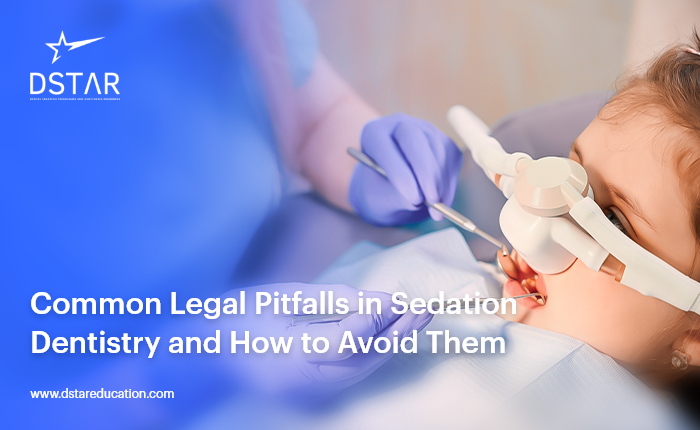Dental procedures can provoke significant anxiety in some patients, often stemming from procedural sounds, prior traumatic experiences, or extended periods without dental care. Effective anxiety management requires clinical precision and empathetic care.
Intravenous sedation offers a controlled and clinically validated method for managing anxiety. When administered by professionals trained through dental IV sedation courses, it enhances procedural outcomes and re-establishes patient confidence in dental care.
This article outlines the commonly administered IV sedation drugs in dentistry, their pharmacological characteristics, and provides guidance on selecting the appropriate agent.
Intravenous Sedation Agents in Dental Practice
IV sedation delivers prompt and adjustable relief from procedural anxiety. The selection of sedatives must consider the patient’s history, clinical complexity, and the desired depth of sedation.
Midazolam
Midazolam belongs to the benzodiazepine class and remains a standard option for moderate sedation. It facilitates anxiolysis, induces anterograde amnesia, and supports a predictable recovery profile. Its rapid onset and reliability make it suitable for procedures requiring patient cooperation in a relaxed state.
Propofol
Propofol induces a deeper level of sedation appropriate for prolonged or invasive procedures. However, in Texas, this medication is not approved for administration by general sedation dentists and must be administered exclusively by dental anesthesiologists. It lacks analgesic effects; therefore, concurrent administration of local anesthetics is necessary. Its short half-life supports faster recovery. Due to its narrow therapeutic index, it requires continuous monitoring and specialized expertise throughout the procedure.
Ketamine
Ketamine remains a useful option in certain dental cases, particularly for patients with complex medical histories. It delivers both analgesia and sedation without significantly suppressing respiration. It demonstrates cardiovascular stability, making it suitable for patients with cardiac risk factors. However, some patients may experience dissociative effects such as hallucinations. Proper pre-screening and post-procedure observation mitigate these concerns.
Dexmedetomidine
Dexmedetomidine is increasingly utilized due to its sedation profile that mimics natural sleep physiology. It enables clinicians to engage with the patient during procedures, which can be advantageous for certain treatments. However, it may induce bradycardia and respiratory depression, necessitating precise titration and continuous monitoring.
Local Anesthetics in Dental Sedation
While IV sedation addresses anxiety, local anesthetics ensure pain management during dental interventions. The following agents represent widely accepted options in dental anesthesia.
Lidocaine
Lidocaine delivers a consistent, rapid onset and pairs effectively with epinephrine to extend duration and control bleeding. Its dependability makes it a preferred choice for various dental applications.
Articaine
Articaine exhibits enhanced bone penetration and is particularly effective in maxillary procedures. Though it exhibits a shorter duration of action, its potency supports efficient procedural execution.
Mepivacaine
Mepivacaine functions well without vasoconstrictors, making it suitable for patients with cardiovascular sensitivities. Its rapid action and moderate duration effectively accommodate shorter procedures.
Bupivacaine
Bupivacaine offers extended postoperative analgesia, making it ideal for cases requiring long-term pain control. Although it has a slower onset, it maintains comfort well beyond the clinical setting.
Clinical Considerations for IV Sedation
Safe and effective IV sedation depends on clinical judgment, thorough preparation, dental sedation courses, and continuous assessment throughout the treatment process.
Conduct a Comprehensive Medical Assessment
A complete review of the patient’s medical history is mandatory. Evaluate current medications, allergies, and chronic conditions to prevent drug interactions and identify sedation risks.
Implement Continuous Monitoring Protocols
Monitor vital signs using pulse oximetry, blood pressure cuffs, and electrocardiography. Real-time observation enables the immediate identification of physiological changes that require intervention.
Maintain Professional Training and Certification
Administering IV sedation demands appropriate certification and ongoing education. Clinicians must remain proficient in emergency response protocols and sedation safety standards to provide optimal patient care.
Conclusion
Intravenous sedation dentistry transforms the care experience for anxious patients. When clinicians possess a comprehensive understanding of each agent’s pharmacodynamics, therapeutic advantages, and limitations, they enhance both procedural efficacy and patient experience.
From midazolam to bupivacaine, each drug plays a precise role in enhancing patient comfort and procedural success. Competence in sedation techniques extends beyond technical execution; it reestablishes trust in dental care and promotes long-term patient health.
References
- San Francisco Oral Surgery. (n.d.). 4 Common IV Sedation Drugs Used in Dentistry.
- Rocky Mountain Perio & Implant. (n.d.). IV Sedation Drugs Dentists Use.
- Colgate Oral Health Center. (n.d.). 4 Conscious Sedation Drugs Used in Dentistry.
- Danbury Dental Care. (n.d.). IV Sedation Dentistry: What Drugs Are Used?
- Becker, D. E., & Reed, K. L. (2012). Local anesthetics: Review of pharmacological considerations. Anesthesia Progress, 59(2), 90–101.
FAQs
What Drugs Are Used for Dental Anesthesia?
Dental anesthesia commonly uses drugs like Lidocaine, Articaine, and Mepivacaine to numb the area and block pain. These ensure a painless, stress-free dental experience for patients.
What Drug Is Used for IV Sedation in Dentistry?
The most commonly used drug for IV sedation in dentistry is Midazolam. It provides quick-acting, calming effects, helping patients relax during dental procedures without full unconsciousness.
 Take Free TSBDE Anesthesia Jurisprudence Practice Exam Now!
Take Free TSBDE Anesthesia Jurisprudence Practice Exam Now!












